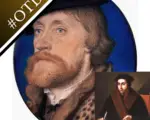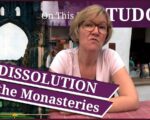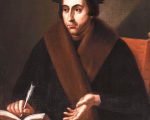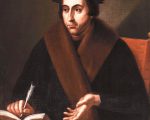On this day in history, 6th March 1492, Juan Luis Vives was born in Valencia, Spain.
Juan Luis Vives was a scholar and humanist, and is known for being the friend and adviser of Catherine of Aragon, first wife of King Henry VIII, and the tutor of the couple’s daughter, the future Mary I. Catherine of Aragon commissioned him to write the treatise Education of a Christian Woman (Instruction of a christen woman) and he created the Satellitium animi, or Escort of the Soul, a study plan for the Princess Mary, which also included “spiritual mottoes and devices”. It was the forerunner of the 16th- and 17th-century emblem books, books which contained a number of emblematic images with an accompanying explanatory text.
[Read More...]




